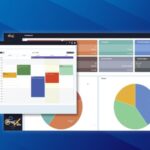For any person involved in designing or procuring and effective mass notification emergency communication (MNEC) system, the following video tutorial is worth watching. Lencore, an audio, soundmasking and MNEC solutions manufacturer, taps into the fact that there remains a large learning curve when it comes to this all-too-critical category.
Lencore walks through system design considerations aimed at maximizing operability and system effectiveness. Before doing so, it walks through four essential characteristics of an MNEC solution.
Reach: This is about a systems’ ability to audibly and sometimes visually communicate with 100 percent of the intended audience. It addresses how a system can “reach” any area where intended audience might possibly be. Think bathrooms, mechanical rooms and other unconventional places that an effective system must reach because audience members might be there during an emergency event.
The methods of communication, meanwhile, include traditional solutions like paging speakers and strobe lights. The adoption of the 2010 NFPA72 code, however, has led to an evolution. Traditional speakers are still in use but they now must meet strict intelligibility standards. Intelligible video communication has also emerged as a significant component. There are also complementary tools such as SMS and social media that can also be effective.
Clarity: In the most obvious sense, clarity refers to how easy it is for the intended audience to understand an emergency message. MNEC system designers need to be a lot more specific than that, ensuring that clarity meets standards set forth by NFPA 72. It’s not just a visual standard. In many busy venues in which MNEC is in demand, a clear audio message is difficult to achieve and therefore video becomes even more important.
Redundancy: MNEC system designers must always realize that despite their best efforts a compromise in their system might occur during an emergency. Therefore, redundant messages through various vehicles are essential. Signals should be sent out in multiple directions so even if there if a break in the line a message will still land.
It also refers to using as many methods of communication as possible. Think audio messages via speakers, digital signage messages, text messages, Tweets and message board alerts.
Reporting: This essential part of the MNEC process keeps the system in constant check and involves promptly alerting the operator if and when a compromise occurs.
This article originally ran on Commercial Integrator’s sister site, MNEC.com.













